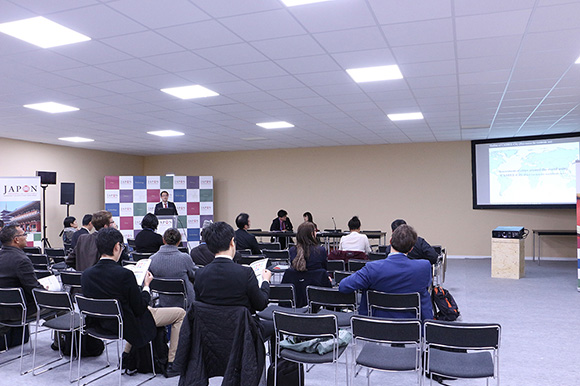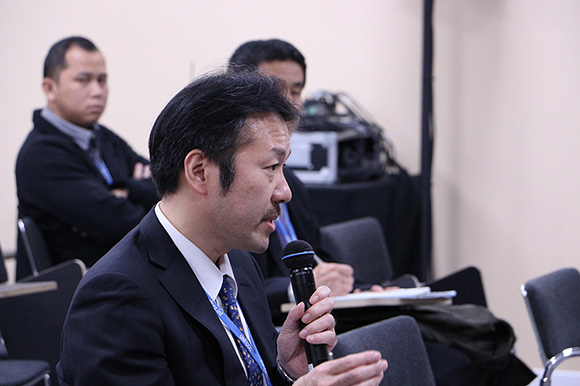Lessons from Asia Low Carbon Cities
-Challenges of Asian Cities and Support by Japanese Experts-
National Institute for Environmental Studies (NIES); Universiti Teknologi Malaysia; Institute for Global Environmental Strategies (IGES); Kyoto University; Mizuho Information & Research Institute, Inc
Outline
We share our lessons from Asian cities: Iskandar Malaysia region, Ho Chi Minh City, Da Nang City, Hai Phong City in collaboration with the AIM research team, Japanese cities/environment organizations, central governments, other stakeholders. This is comparable to best practices of the Solution Agenda launched by the French Government for COP21.
We also introduce CASBEE city world and the Future City initiative.
Program
-
- Introduction
- Dr. Junichi Fujino, Senior Researcher, NIES
-
- Installation of Building Energy Monitoring Scheme into Malaysia
– Lessons learned from Tokyo Metropolitan Government (TMG) - Prof. Ho Chin Siong, Professor, UTM
Ms. Yuko Nishida, Planner, TMG
- Installation of Building Energy Monitoring Scheme into Malaysia
-
- Launching of CASBEE-City –Pilot Version for Worldwide use (2015)
and Introduction of FutureCity Initiative (FCI) activities - Dr. Junichi Fujino,Senior Researcher, NIES
- Launching of CASBEE-City –Pilot Version for Worldwide use (2015)
-
- Launching of New Book “Theory and Practice of Urban Sustainability Transitions”
- Mr. Satoru Mizuguchi, Journalist
-
- Discussion
-
- [Chairperson]
- Dr. Junichi Fujino, National Institute for Environmental Studies, Japan
Summary
We share our lessons from Asian cities: Iskandar Malaysia region, Putrajaya, Ho Chi Minh City, Da Nang City, Hai Phong City in collaboration with the AIM (Asia-Pacific Integrated Model) research team, Japanese cities/ environment organizations, central governments, other stakeholders. This is comparable to best practices of the Solution Agenda launched by France Government for COP21. We also introduce CASBEE city world and the FutureCity Initiative.
Dr. Junichi Fujino (Senior Researcher, NIES) introduced the situation of “Low Carbon Society Action Plan Development” and “PDCA implementation” in Asian cities. Prof. Ho Chin Siong (Professor, UTM) explained how to install “Building Energy Monitoring Scheme into Malaysia based on building energy and GHG reporting system in Tokyo Metropolitan Government (TMG)”. Ms. Yuko Nishida (Planner, TMG) shared her experience in TMG. Audiences had good interest in success key factors of Tokyo building system and high expectation on diffusion of best practices.
Then Dr. Junichi Fujino (Senior Researcher, NIES) launched “CASBEE-City –Pilot Version for Worldwide use (2015)” and introduced FutureCity Initiative (FCI) activities. Mr. Satoru Mizuguchi (Journalist) also launched new book “Theory and Practice of Urban Sustainability Transitions”.
Almost all audiences kindly showed good interest and stayed at the venue until the end.
This session is supported by MoEJ and SATREPS (JICA/JST)
Key Messages
- Best practices towards Low Carbon Societies in Japanese cities can transfer into Asian cities.
- Methodology to develop “Climate Change Action Plan” in Japan, Shiga Prefecture, Kyoto City has applied into Iskandar Malaysia, Putrajaya, and Ho Chi Minh City.
- “Building Monitoring and Reporting Scheme” in Tokyo Metropolitan Government has applied into Putrajaya and Iskandar Malaysia. It will be implemented next year.
- “CASBEE-City –Pilot Version for Worldwide use (2015)” can evaluate the efforts to be low carbon and sustainable cities.
- Series of Book “Theory and Practice of Urban Sustainability Transitions” can include best practices in Asian cities.
Photograph
Reporters
Junichi Fujino, National Institute for Environmental Studies










